Video tour and tips for a small woodworking shop
An apartment wood shop is hopefully not your shop's final form, but it can still punch above its weight.My small shop dictates a lot of things, so figuring out how to work with it has become a crucial part of my woodworking skill set. The space is 11 ft. x 11 ft., and not all of that’s usable—not ideal. But when Fine Woodworking lost its shop in 2018, I didn’t have room to whine about what’s ideal. I had to figure out my space, from storage to tooling to layout. None of the problems have proved insurmountable (or my solutions ingenious), but I have learned some things along the way.
For one, from tool walls to sliding tills in deep drawers, I’ve gone vertical with my storage. Floor space is hard-earned in my shop, so while I have and love my tool chest, it’d be out the door if it didn’t easily roll under my bench and double as a seat when needed. Even my handplanes are on stepped storage, allowing me to make the most of the space in a repurposed entertainment center that was designed to hold an old CRT TV. The sliding tills in a couple of drawers, inspired by traditional English tool chests, accomplish the same thing, giving me multiple layers of storage in an otherwise obnoxiously deep space. Then, of course, there’s shelving.
The second, and perhaps hardest-learned lesson, is that I need open space. This is slightly heartbreaking, since space is gold. But what that space buys me is actual room to work, especially assembly and wood storage. This goes without saying, but woodworking isn’t happening without wood or a place to assemble that wood. So while I’d love to squeeze another tool or two in my shop, it’d just get in the way of actual furniture making.
Speaking of tools, power tools have the steepest criteria for coming into my shop. They require a lot of room, after all. I started with a benchtop mortiser, added a planer (which I keep in my apartment’s basement, since I live in a converted house), and then a trim and midsize router, each with plunge and fixed bases. I got a track saw at some point too, and although that’s been collecting sawdust, I can’t give it up yet. The last power tool to come in was a loaner 14-in. bandsaw. I’m on the fence whether I’m going to keep it or bring in a wee (but reliable) tablesaw.
The shop’s not the easiest to work in, and it’s far from a dream, but it’s also far from a problem. After all, I still have a shop. Plus, my space makes Vic Tesolin’s early 40-sq.-ft. shop look child-size by comparison. Considering I’m a child-size Vic, it all balances out.
For more tips on working in a small space, click on
- How to Make Better Use of Your Shop Space (This one features a shop in a spare bedroom!)
- The Best Power Tool for Apartment Woodworking
- From the editor: A shop to call home
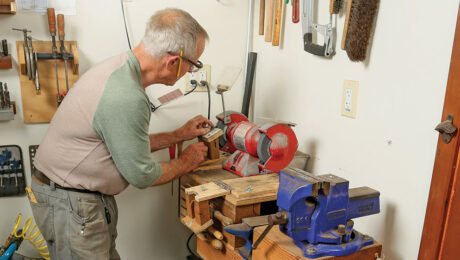
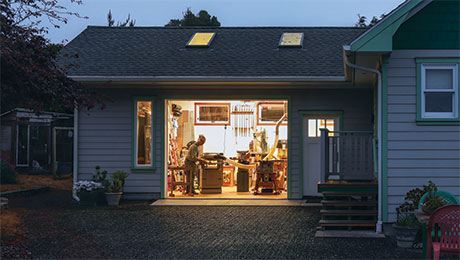
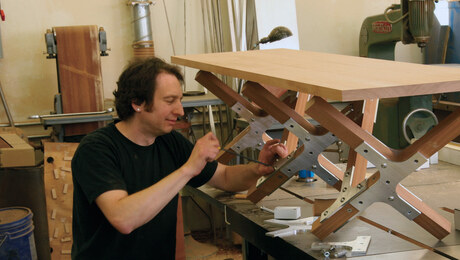
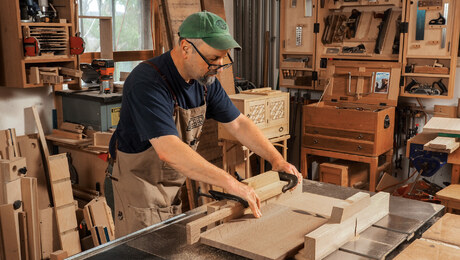




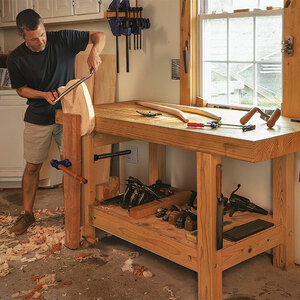
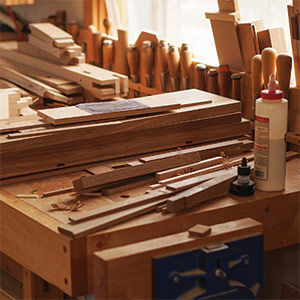






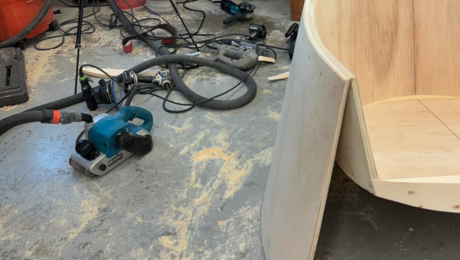








Comments
It is amazing what he can do in such a small space. Also it make you think about how lucky people with larger spaces and not having to think about the quietness of your machines would be an issue. Great Video!!! I know we need to be like Barry and ORGANIZE!!!
Thank you for this helpful video! Living in a large metropolitan area/city, I posit that this is applicable to many of us who are forced by fiscal or spatial limitations to work in a very reductive fashion. In fact, it’s a great place for those who are just starting out, but are unsure if they want to fully dive in to the expense and commitment of a fully equipped shop.
Your comment about your potential acquisition of a table saw is understandable and appreciated as I slowly move along the path of switching from more power tools to more hand tools. However, a table saw requires more clear floor space than any tool in the shop that I am aware of. Speaking from experience, I suggest a Makita tracksaw + Festool MFT instead, because:
A) The price of the combo is about the same as a decent table saw alone.
B) You get the added bonus of the folding, highly effective MFT (this deserves an article all of its own) (BTW I am NOT a Festool fanboy). That said, I often use a cutting grid on sawhorses, and I have a Multi-Function Slab (it’s just the MFT top on sawhorses) but that is not a substitute for the better stability and options of the MFT.
C) The combo is specifically about portability, so it is easily set up outdoors or somewhere else for machining larger workpieces, or when the weather is inviting or we need to be quiet indoors.
D) The setup can be compactly stored out of the way in a restrictive shop space.
E) The MFT obviously is another workbench/assembly bench.
F) This solution would allow you to keep your bandsaw!
You've read my mind. An MFT or something similar has crossed my mind a few times. The portability and versatility can't be beat. Still, I doubt it's in the cards for me. The table, when stored, would become a barrier to other tools or it'd cover my only window. I'm too impatient to move tools to get to other tools, and my window helps light photos for Instagram! You make a solid point about tablesaws too. I should have been more specific: I'd likely get a small one, and I'd use it primarily for crosscuts.
Curious how you handle dust collection in such a small space and with so many surfaces.
I... don't really. There's a vac for the router table, but that's about it. So I often have to step out for a several minutes while dust settles, then come back in to clean it up. It's not ideal.
Great story. I have been using my small one car garage for 30 years as my shop. Everything is on wheels, router table, planer, tablesaw, bandsaw, drill press and a couple of shop made removable tabletops that fit collapsible portable tables. Over the years I have go vertical for storage and a wall mounted wood rack(long boards). There is never enough room, every project is a dance of planned work to avoid returning to a particular machine. I am building a hutch, that has for the first time, caused me to do assembly and finishing in the two car garage. The photo shows half of the shop.
Working in small spaces has always been tough. Being without a table saw is frustrating, takes longer to finish your project. My suggestion:
1 - Get a Bosch Jobsite Table Saw
2 - Get a Bosch Jobsite Table Saw
3 - Get a Bosch Jobsite Table Saw
These are my first three suggestions. Get a Benchtop Bandsaw for when needed. I just got mine from Goodwill for $25. I won't need an entertainment center, I have already been repurposing furniture pieces, but you have a good suggestion for others.
I have few square feet but 10-foot ceilings, so I moved my wood storage off the floor on trolleys between two 6x6 beans, with a mounted winch to bring up and down. that's a tool storage board behind it. I'm a fan of wildly over-engineered solutions to inconsequential problems!
Heh, heh, heh, those sound like pretty healthy "Beans". Just you and the "Jolly Green Giant", eh?
Beams!! They weighed a ton, so I put the end in place and backed them up with the tailgate of my pickup truck. Makes you wonder what the epitaph would have said!
Very interesting.
I didn't realize you could do so much in such a small place. Amazing.
Guess you're not married or share the apt.?
My wife hates it when I walk into my house from my shop with sawdust on my clothes and hair. I can't imagine even if you do have a dust collector that it isn't dusty in your apt. That asked, if i were a bachelor (married 48 yrs so far), I'd happily do a shop like yours.
Well done.
Kyle
In a hand tools shop, the cost of dust collection is pretty much whatever the price of a broom, a bench brush and a dustpan are.
Sounds maddening.
Nice ideas. Thanks. How do you handle dust collection ? Especially with the band saw (and router).
Excellent question. Someone above asked the same thing. Here's my reply: "I... don't really. There's a vac for the router table, but that's about it. So I often have to step out for a several minutes while dust settles, then come back in to clean it up. It's not ideal."
Great article and video! One aspect that stood out to me was how you make use of two spaces: your main shop in your apartment and a separate location for the millwork in the basement. I am getting more into hand tools, but winters in Wisconsin makes woodworking in my unheated garage a bit challenging. I already use my basement for finishing during the winters, so I’m considering extending that space to use as a second shop for hand tool work. Space is limited in my basement and I want to minimize dust and noise, so I would continue using my garage for millwork, and possibly my bandsaw and table saw. Obviously, having a single dedicated woodworking shop is ideal, but not everyone has the space or the right conditions to make that work. What advice would you have for someone considering using two shops?
Wicked quiet!
Log in or create an account to post a comment.
Sign up Log in